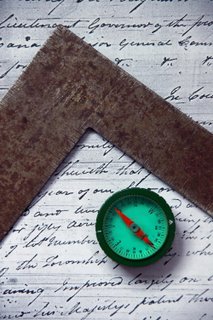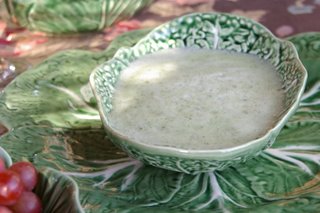
Two Wrongs Can Make a Write
It’s said that two wrongs don’t make a right. Maybe so, but three rights make a left - and two rights get you right back to whatever it was that you left. All of which makes me wonder if I’m right and whether there’s anything left to write right now and if this blog is a writing ritual or a wordwright’s righting rite. Yeah, right. G’night.
Thursday, July 20, 2006
Posted by
Judy
on
Thursday, July 20, 2006
2
wise owls hooted in the forest
![]()
Anathea
I was once a movie star. Black and white was the medium, so I guess you could say it was an art film, and there was even a sex scene. It took considerable acting skill to keep the bathing suit straps from showing above the sheets and still create some sense of erotic shenanigans for the camera, and the thing was necessarily short: in a four-minute movie there isn’t a lot of time for plot development, let alone fornication.
The filmmaker was on his way to a career in fashion photography, but in 1966 R.I.T. saw to it that her Professional Photography graduates were well-rounded. “Film” was not an elective. The studio was the living room of an apartment in the slums that bordered campus in those old downtown days. The plot would be long-forgotten except that it was based on a song; a song that I also sang for the sound-track: Anathea. (Her brother steals a horse, gets caught, chained up and the judge says “Hang him.” She goes to the judge with gold and silver to buy brother’s freedom; Judge says keep your money, all I want is your ass, so she beds down with him then hears the gallows groaning. The song isn’t clear on exactly what she does next, but it ends up with “Thirteen doctors can not cure him, thirteen shelves of drugs can’t heal him.”) Take that, you sonofabitch. Tears all around. End of movie.
You laugh, but I’ve seen lots of worse films.
Note: I was going to include a link to the lyrics, but apparently Judy Collins has taken action to have them removed from the Web. Strange... I did finally find a copy at: http://zen-lunatic.com/wp/?page_id=4 While you're there, check out the entry "dad's wisdom."
Posted by
Judy
on
Thursday, July 20, 2006
1 wise owls hooted in the forest
![]()
Wednesday, July 19, 2006
 Busy Bees
Busy Bees
Hoe rows; mulch beds; thin carrots and kale; net blueberries to protect from hungry birds; pick and freeze black-caps; dead-head perenniels; be-head garlic; feed flowers; fence for coons; weed asparagus bed; tear up strawberries and re-plant: the only ones in the garden who work harder - a lot harder - than me are the bees, and they never stop to rest.
Posted by
Judy
on
Wednesday, July 19, 2006
0
wise owls hooted in the forest
![]()
Tuesday, July 18, 2006

Bread Bakers, Listen Up!
In the old days (say the mid-1850s), the rural family baker had a flour barrel. From it she – you can be sure it was a she – made bread, pancakes, biscuits, and any other “breadish” baked goods. The barrel was not only her storage place for maybe a hundred pounds of flour, but it also served as her mixing bowl.
When she wanted to make bread, she removed the barrel’s lid, made a small “well” in the flour, and then poured in the rest of the ingredients. Careful mixing allowed the liquids to pick up the necessary flour, and when enough flour was absorbed to make a dough of the proper consistency, the baker would remove it and replace the lid on the flour barrel. The initial mixing complete, she could knead the dough on the table and then let it rise according to whatever recipe she was following.
I have baked a good many loaves of homemade bread, but pouring the liquid ingredients for a couple of loaves into my month’s supply of flour would make me pretty nervous, especially if I was depending on that bread as a mainstay of all three of the family’s daily meals every day of the week. Great-grandma could have showed me how, but she’s just looking at me thoughtfully from her old oval frame, seeming to wonder why I wouldn't rather use a bread machine.
Posted by
Judy
on
Tuesday, July 18, 2006
1 wise owls hooted in the forest
![]()
Monday, July 17, 2006
John Brown's Body
Our son’s recent four-day visit was very enjoyable from start to finish, winding up with the trip to Saranac Lake's little tiny airport to put him on a little tiny airplane that would return him to New York City. As he flew off to the metropolis, we drove over to North Elba and visited John Brown's farm.
The caretaker of the historic site is a descendant of John Brown and is passionate about the man and his cause. She is a wonderful story-teller who held us spellbound with her emotional vignettes, told with perfect theatrical timing. We hung on her words as we went through the house, some of which is furnished with Brown's own things, the rest with period pieces.
In 1846, Brown, who was living in Ohio, heard of "Timbucto," the community started by Abolitionist Gerrit Smith. It was a colony of sorts located in the northeastern Adirondacks which offered free 40 acre parcels of land to blacks. In 1849, Brown moved there to help teach these colonists how to farm. He bought 244 acres nearby (the site of the John Brown Farm State Historic Site we visited), but quickly realized that most of the Timbucto land was unfit for farming and only the hardiest of the colonists would be able to survive there. In 1851 he went back to Ohio, but in 1855 returned with his family to North Elba and the farmhouse and barns were built. His wife and a couple of his daughters lived there, but he only visited sporadically because of his anti-slavery activities in Kansas and Ohio. The famous Harper's Ferry raid took place in Virginia in 1859; Brown was captured, tried, and then executed on Dec. 2, 1859. The Civil War broke out shortly thereafter, arguably (by this caretaker at least) partly as a result of John Brown’s martyrdom. He is buried at the farm in North Elba along with two of his sons and ten other raiders killed at Harpers Ferry.
According to this caretaker, John Brown’s affection for “negroes” and belief in equality was formed very early in his life through his own experience rather than because of the strong religious fanaticism many people attached to him later. She is friends with Russell Banks, author of Cloudsplitter, and although in love with his earlier book, The Sweet Hereafter, she could not bear the fictionalization she encountered in Banks’ portrayal of her ancestor.
You may someday visit Lake Placid’s resorts, drive up the Whiteface Mountain Memorial Highway, enjoy the view from atop the ski jump or visit the bobsled and luge runs and the skating rinks. Maybe you’ll cheer on the competitors in the Iron Man competition or cross-country ski race, perhaps you’ll paddle a kayak or canoe, and maybe you’ll enjoy a wonderful meal at either the Mirror Lake or Interlaken Inn. But while you’re there soaking up all that Olympic Village excitement and fun, take a couple of hours to quietly experience John Brown’s home and meet his descendant. You won’t be disappointed.
Link to information about the farm: http://www.nyhistory.com/gerritsmith/nelba.htm
Posted by
Judy
on
Monday, July 17, 2006
3
wise owls hooted in the forest
![]()
Sunday, July 16, 2006

Dishes
I have a weakness for dishes.
A slice of bright lemon pie picking up the yellow of flowers on an antique plate... or the deep red of pickled beets atop dark green leaf lettuce on a stark white one... or the traditional Thanksgiving feast mounded upon blue Spode... Pretty food, pretty plates... The pleasing presentation of good food enhances the experience of eating it.
Here you see chilled honeydew soup with its green, limy, mint coolness, in a green leaf-like bowl: pretty to look at, delicious to slurp.
Chilled Honeydew Soup
Flesh of 1 honeydew melon (seeded)
1 tablespoon of honey (more or less)
3 tablespoons fresh-squeezed lime juice (more or less)
¼ cup of fresh mint leaves (loosely packed) from the garden
Buzz it all in the blender, and then chill it for several hours. You can garnish it with a thin slice of lime or a small sprig of mint.
Hmmmm..... maybe it’s food - not dishes - that I have a weakness for.
From my home to yours, happy summer!
Posted by
Judy
on
Sunday, July 16, 2006
0
wise owls hooted in the forest
![]()

